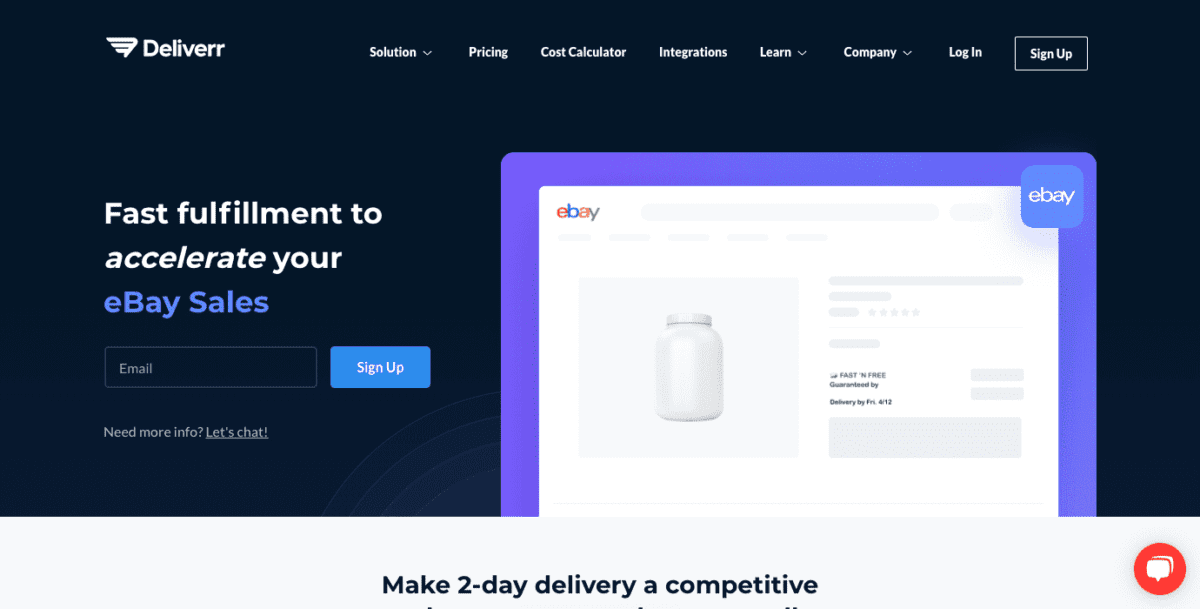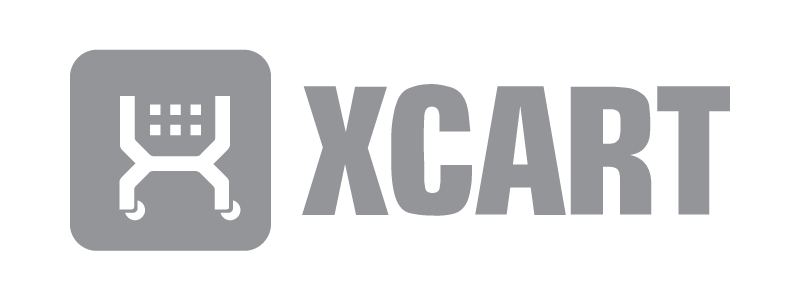Order fulfillment is a key part of any ecommerce business. It constitutes getting the customer’s order from your store to the customer.

Some strategies use fulfillment centers that store and deliver goods once an order is placed. Understanding order fulfillment is important for growing businesses and cutting operational costs. This process helped Amazon achieve its global dominance and continues to be a major focus in ecommerce and retail.
What is Order Fulfillment

Order fulfillment is the process that takes place between when a customer places an order and when it arrives on their doorstep. This includes pulling and packing orders, then shipping them out for delivery.
While many companies will handle this process on their own, fulfillment services can do all the legwork allowing you to focus your time on growing your business. These services will even store your products, meaning all you have to do is get them the orders and shipping addresses; they’ll handle the rest.
This allows small teams, even a single person, to run an ecommerce operation on par with much larger companies. Let a fulfillment service handle all of the physical inventory for you, so all you have to worry about is getting orders.
Why Is Order Fulfillment Important?
Order fulfillment strategies can make or break an ecommerce business and its sales channels. No matter how good your products or prices are, your customer base won’t be happy if their orders arrive late or incomplete. Timely delivery of shipments, especially for online orders, is one of the best practices for any business model.
A good order fulfillment operation ensures customers receive their orders quickly and accurately. For ecommerce websites, order fulfillment encompasses the entire physical aspect of the operation. If you want to build a reputation as a reliable company that meets customer expectations, you need to work out how to create an efficient order fulfillment process.
How Product Fulfillment Companies Work
A number of companies handle order fulfillment with different services and specialties, but they all operate off of the same basic process.
Receiving
The fulfillment process begins when a customer places an order. Their information is sent to the fulfillment company, so they know what to pack and where to send it.
The receiving process can be automated in many cases thanks to the integration between these services and popular ecommerce platforms. Say a customer buys a product from an eBay listing. Rather than the seller manually sending that information to fulfillment, eBay can automatically send details like the shipping address and purchased item to get the ball rolling.
After order processing, they can get started.
Adding Inventory
Fulfillment companies need to have your product inventory on hand in order to ship it out. Depending on the size of your company and the nature of your business, this can be as easy as delivering a box of goods to their warehouse or setting up a supply chain.
Either way, the fulfillment service is responsible for storing and managing that inventory so they can fill any orders received. It is up to you to keep them supplied.
Routing Orders
Once an order is received, the order fulfillment company finds the best way to get it to the customer. This is usually accomplished through major carriers like FedEx or USPS, though some companies have their own fleets. In any case, they will find the best way to get the product from the distribution center to the destination location.
Picking, Packing, And Shipping
Before the product arrives at the customer’s door, it is processed at the fulfillment center. Your products will be stored with many others, like shelves at a store. Once the order is received, the warehouse team will pull the product from stock, pack it according to the agreed-upon methods, and send it out for delivery.
Delivery of Products
In most cases, delivery will be handled by a major parcel or freight carrier. Once the product is picked and packed, the fulfillment service will arrange for it to be picked up or delivered by a parcel carrier for delivery.
This step tends to be the biggest time saver for ecommerce companies who would otherwise have to package and ship each order individually.
Managing Inventory
Once an order has been processed, the fulfillment center will remove it from their warehouse inventory. This allows you to stay updated with your current stock levels, so the fulfillment center doesn’t run out of inventory. An efficient warehouse management system is crucial to your ecommerce order fulfillment strategy.
Usually, you can check product inventory levels through an app or account portal.
Handling Returns
Some fulfillment services also handle the inevitable returns when a customer wants a refund. Especially for categories like clothing, where returns are common, this is an integral part of the process.
When an order is returned, the fulfillment service will receive it and add it back to stock (unless it is defective).
Some fulfillment services do not handle returns, so be prepared to have your own process in place if that is the case. This may not be a concern for categories where returns are few and far between, but in some cases, you will want to ensure a fulfillment service handles returns before signing up.
Challenges of Order Fulfillment
Especially for ecommerce companies, order fulfillment is a huge part of the operation. When you consider that you can outsource shipping, it cuts down on your operational requirements significantly.
Most order fulfillment processes come with many challenges and can be time-intensive. Here are some order fulfillment challenges you can avoid with a third-party service.
Inventory Management
As a company grows, its need for warehouse space also increases. Many ecommerce startups can get by with a closet or corner of the garage, but soon that won’t be enough. Renting warehouse space includes a lot of overhead costs, including staff on-site.
You need accurate inventory levels to manage order volume and avoid overselling or running out of stock. If you do, you will lose out on sales and maybe even customers. That’s why it’s so important to keep track of SKUs.
In many cases, using a fulfillment service can be more cost-effective. You also avoid the risks and time commitment of setting up your own product inventory management system.
Demand Planning
Part of effective inventory management is demand planning. You need to be able to predict future sales to ensure you are sufficiently and efficiently ordering stock.
While this aspect of fulfillment is usually left up to you, it is critical to running an ecommerce business.
Logistics Planning
Order fulfillment is the result of smart planning and logistics. Sourcing, storing, and shipping products, as well as order management, requires a lot of forethought to ensure everything runs smoothly.
While sourcing will still usually fall to you, letting logistics companies figure out inventory storage and shipping can save you a lot of hassle.
Supply Chain Execution
Once the logistics plan is in place, executing it requires space and man-hours. As your company grows, these needs will grow with it.
Incoming inventory needs to be received, often with the help of forklifts and loading docks. It then needs to be stored appropriately in a warehouse. Lastly, it needs to be pulled from stock and staged for shipment.
The more you sell, the more product needs to be received, stored, and shipped. This can be a significant challenge for startups and small businesses on the rise.
International shipping
International shipping comes with its own hoops to jump through. Depending on where a shipment is going, there may be customs forms, declarations, and restrictions, not to mention shipping labels, the freight cost and possibly other fees.
Ecommerce fulfillment services that ship internationally will be familiar with the process, saving you time and money. If your ecommerce business appeals to a global market, don’t limit yourself to a much smaller market.
Season and event fluidity
For some product categories, sales will fluctuate drastically depending on the timing. This could be seasonal, like swimwear or holiday gifts, or related to other events, like masks during COVID.
If you are managing your own warehouse, it can be tricky to be cost-effective during the off-season. Most fulfillment service providers allow the flexibility to pay for less space during slow periods, then ramp up stock to meet seasonal demand.
Order Fulfillment Models
Order fulfillment options come in all shapes and sizes. Depending on the nature of your business and the variety of products you sell, it can be a very simple or an extremely complex step-by-step process. Your order fulfillment model will probably fall squarely into one of the following categories.
In-House Order Fulfillment
For smaller companies with a limited selection of products, internal fulfillment may be sufficient. This means your company handles rea independently, which often requires a warehouse or other type of facility.
Outsourced Order Fulfillment
Outsourcing fulfillment, such as third-party logistics (3PL), means another company handles receiving, storing, and shipping items for you. This usually means you provide the physical inventory and orders, and they handle the rest, like providing warehousing. Fulfillment services can handle a large portion of the physical operation, so you can focus your resources on growing the company and getting more sales.
Dropshipping
Dropshipping companies fulfill the products they sell. In other words, you can sell their products, and they will deliver them for you.

For example, if a customer purchases a dropship item from your website, you simply send that order to the supplier. They pick, pack, and ship the product to the address that the customer provided you when they placed the order.
This is a very convenient option for ecommerce as the company that provides the product also fulfills it.
Hybrid Fulfillment
Hybrid fulfillment happens in scenarios where in-house fulfillment works better for some orders while outsourced fulfillment or dropshipping works better for others.
For example, say a small company sells video games and arcade cabinets. While they may have the capability to store and ship video game media easily, arcade cabinets are another story. For cabinet orders, they have partnered with the manufacturer to dropship those products. This way, they don’t have to store and handle heavy arcade cabinets but can still save money by fulfilling other orders internally.
Hybrid fulfillment can be a good choice when an all-or-nothing approach wouldn’t be the most efficient use of your time and money.
Best Tips for Improving Your Order Fulfillment Process
Order fulfillment is dependent on two main factors: speed and accuracy. The faster customers receive their product after placing their order, the happier they will be (assuming it is correct).
Here are some ways to improve your entire order fulfillment process for a faster and more accurate operation.
Optimize Inventory Management
With modern software, inventory management can be automated to the point that it requires little human intervention. Every time an order goes out, that quantity should be automatically removed from stock. When a new order comes in, that should likewise be automatically added to stock. Aside from occasional physical counts to ensure accuracy, inventory should be tracked automatically.
The actual physical management of inventory will depend on your products and storage solution. Keeping products clean, dry, and accessible is essential to ensure they are ready to ship as quickly as possible.
Double-check the Products Before Shipping
Accuracy is vital for order fulfillment. Shipping the wrong item or to the wrong customer inconveniences shoppers and costs you money. A simple double-check of the packing slip can catch mistakes before they leave the warehouse. This will save you money and improve the customer experience.
Work on Relationships With Shippers
Your shipping provider is a critical piece of the order fulfillment puzzle. They are responsible for the last leg of the journey, getting the product from you to the customer.
It is important to choose the right shipping carriers for your business and make the most of their services. Are you wasting time delivering packages daily when you could schedule a pickup? Are you printing your own labels for the best rates? Ask them about shipping strategies and ways they can help.
Understanding your shipping provider and working with them as an order fulfillment partner will help you find the best shipping method and could even increase shipping speeds.
Make Data-Driven Decisions
Data-driven decision-making ensures you are making the objectively best choice at each opportunity. When it comes to order fulfillment, the numbers are very important.
Using stats like products sold per month, order fulfillment time, and shipping costs can help you find ways to save money and speed up your operation. Remember, if you aren’t measuring it, you aren’t managing it.
Utilize Automation Where Possible
When it comes to ecommerce order fulfillment, almost everything can be automated to some extent. When a customer places an order on your website, the entire fulfillment process should run almost independently.
Any repetitive task can be automated. This includes:
- Entering orders
- Creating a packing slip
- Printing each shipping label
- Sending email confirmation
You can save time and reduce human error by automating these processes with order fulfillment software and ecommerce integrations.
100% Full Transparency
When customers spend their hard-earned money, they want to know where their products are. Letting them know how long it will take to have their product in hand can significantly improve customer loyalty. This includes real-time delivery tracking and accurate estimates before placing their order.
If you can get your streamlined order fulfillment process down to a science, with accurate shipping times and costs, your customer satisfaction will go up.
Best Fulfillment Services
The benefit of outsourcing fulfillment is worth considering for many ecommerce companies. Rather than managing your own warehouse, packaging each order, and shipping them from your location, you can let a specialized company handle all of that for you.
If you are looking for a fulfillment partner, here are our picks for the best fulfillment providers.
ShipBob

ShipBob is one of the best values for a capable fulfillment service provider with a strong track record. It boasts over thirty fulfillment centers across six countries and is capable of 2-day shipping.
ShipBob offers integration with many popular ecommerce platforms like eBay, Etsy, and Walmart. An intuitive UI makes it easy to manage your account, orders, and customer service. Just connect your accounts, send ShipBob your inventory, and they will automatically ship orders from the nearest warehouse.
For the price, ShipBob is an effective and reliable option that is tough to beat.
Deliverr

The Deliverr service boasts 2-3 day shipping and simple fulfillment pricing. They handle every part of the process, and you can use their cost calculator to estimate expenses.
Deliverr integrates with Amazon, WooCommerce, and Shopify, in addition to other major ecommerce platforms. Real-time inventory status and order tracking provided by warehouse management systems keep everything transparent so you can effectively manage your business.
The downside to Deliverr is that they do not handle returns or ship internationally. However, they have the most fulfillment locations of any service on this list, all in the U.S., allowing for fast deliveries at a great value.
Falcon Fulfillment

Falcon Fulfillment is a full-service option with one major hurdle: order minimums. Falcon has a 4,000 order minimum per month, which makes it viable only for larger ecommerce operations.
If you do move that quantity, Falcon Fulfillment is a good value with some additional services available. Kitting, custom packaging, and eco-friendly packing material are all available. So if you want your packages to stand out with custom branding or other embellishments, you can leave it to Falcon.
They also do returns management, leaving you very little to worry about after an order is placed. Note that Falcon Fulfillment only operates out of the U.S.
Simpl Fulfillment

Their ability to handle special products makes Simpl stand out from the other fulfillment options on this list. With a climate-controlled warehouse and the ability to handle fragile or even hazmat items, Simpl is an excellent choice when other services can’t meet your needs.
They operate from a single location in the U.S. with no order minimum. You can manage everything live with real-time inventory management software that covers orders and returns.
While Simpl may not be the cheapest option on this list, the value is still very good, considering the ability to handle more specialized goods. The service also integrates with the most popular ecommerce software and online marketplaces making it very easy to use.
Ryder E-Commerce by Whiplash

Ryder is another good option for larger operations that can meet the order minimum. Ryder has a lot to offer if you send at least 2,500 orders per month.
Two dozen nationwide locations and two international fulfillment centers ensure you are well-positioned for fast deliveries. Ryder also supports dropshipping, which, combined with their automation tools, can help you build a very efficient operation.
Returns management and kitting services give you complete control over orders coming back and shipping out. Fulfillment costs are less transparent with Ryder, so you may end up paying more, but the premium service may still make it a good choice for busy ecommerce companies.
FAQs
Below are some answers to questions about online order fulfillment.
How to Choose the Right Order Fulfillment Service
While there are many factors to consider when selecting a third-party fulfillment service, one of the easiest ways to filter your options is by order quantity. Advanced order fulfillment services have minimum order thresholds that affect pricing or availability. Start by estimating your monthly order amount and compare that to the criteria for services you are considering.
From there, the next obvious way to filter your options is pricing. Fulfillment services will eat into your profit on each order, so naturally, you want the best deal. Just be sure to temper low costs with acceptable service, or you may end up losing customers who have a negative delivery experience.









